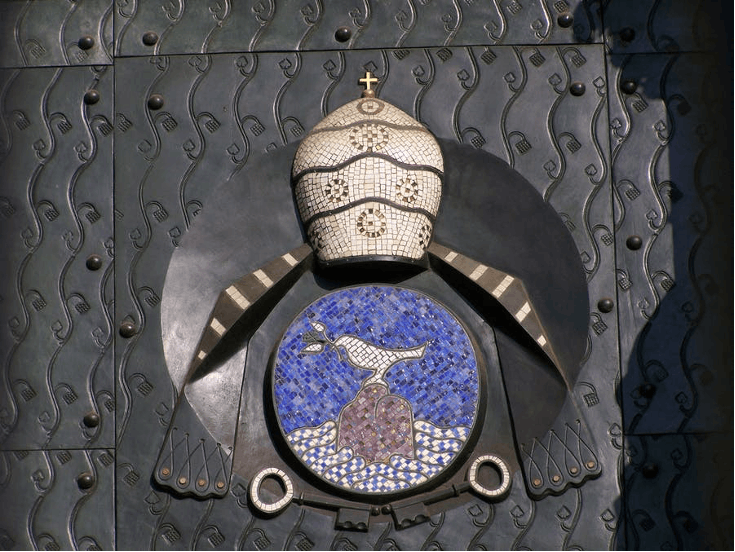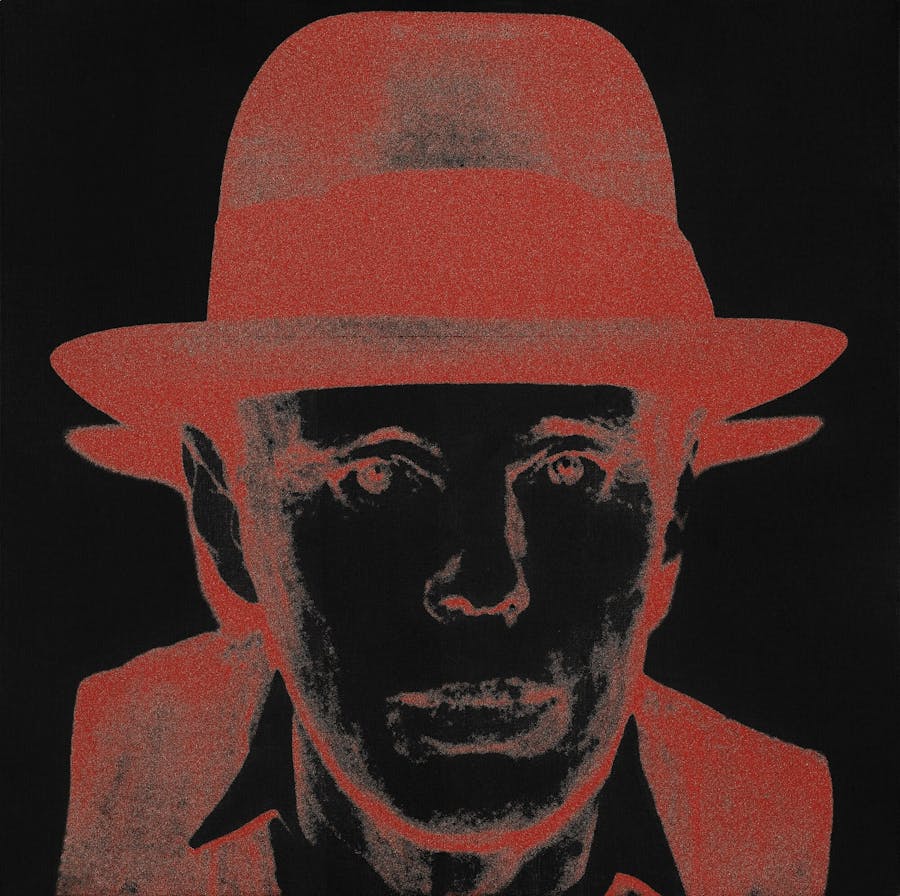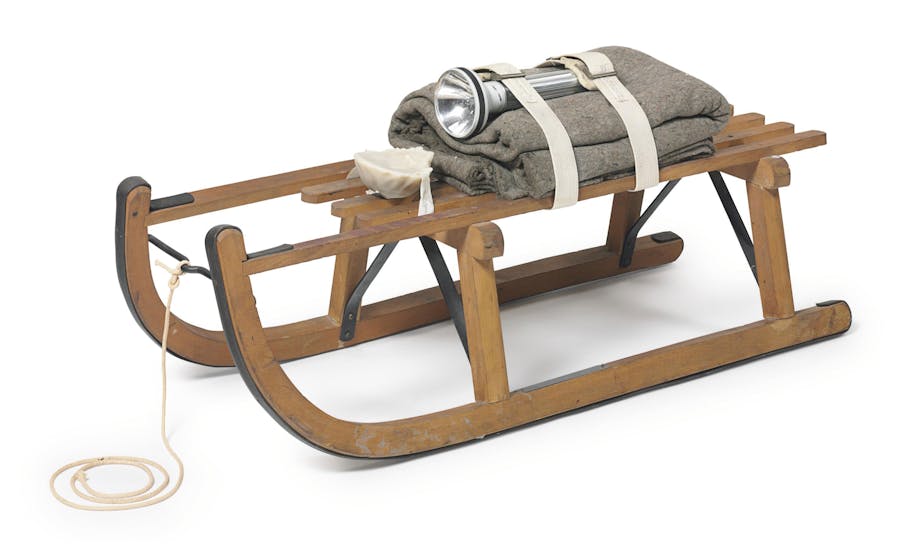Joseph Beuys: 5 Facts to Know
Born over 100 years ago, Joseph Beuys was the German creative who believed everyone could be an artist.
Joseph Beuys (1921-1986) caused a stir not only with his actions, but also with his art theories. A key aspect of the German artist’s practice was the consistent extension of the term ‘art’. He believed everyone could be an artist. Here are five little known facts about the artist, teacher and theorist.
1. His hat was more than just his trademark
When you think of Joseph Beuys, you probably imagine a man with a fishing vest and felt hat. The felt hat is considered his trademark – the artist was rarely found without it. However, little know that the hat was more than a simple fashion choice, it also had a protective function for Beuys, who, in 1944, was shot down when volunteering as an on-board radio operator for the Luftwaffe. For a lifetime, Beuys remained marked by the consequences of the event. Felt became his preferred material because it was insulating and protective.
Related: The 8 Most Popular Fashion Brands
2. He worked with Heinz Sielmann and on Cologne Cathedral

Beuys received his training as an on-board radio operator from Heinz Sielmann, who later became famous for his animal films. After studying at the Kunstakademie Düsseldorf, Beuys worked with Sielmann on his films about the game and fauna of the Lüneburg Heath (a woodland in Lower Saxony in northern Germany), the Ems (a river in northwestern Germany) and Schleswig-Holstein (the northernmost of the 16 states of Germany).
Related: 10 Famous Sculptures of Art History
From 1947 onwards, Beuys was a pupil of sculptor Ewald Mataré, becoming his master student in 1951. In 1948, Mataré was commissioned to design the doors of the south portal of Cologne Cathedral. Accordingly, Beuys was involved in the execution and set some of the mosaics.
3. He took desperate measures to fundraise for his art

For the 1982 documenta 7 in Kassel, Beuys planned a large-scale project entitled 7000 Oaks. As the name suggests, the work consisted of 7,000 oak trees planted at different locations around the city, a project which took a total of five years. A basalt block was placed next to each tree, which over time was intended to make visible the shift in the proportions of this ‘social sculpture’.
Related: The 12 Most Expensive Paintings Ever Auctioned
The project was one of the most expensive art actions of its time and was financed partially through donations. Each one of the basalt blocks could be purchased for 500 DM (about $300) and was matched together with an oak tree. Further support was provided by various sources, including a New York art foundation as well as the proceeds of art donated by Beuys’ artists friends, including Andy Warhol. Beuys himself generated revenue by selling an artwork for almost 800,000 DM ($490,000). He also flew to Japan, where he gave lectures, and advertised whiskey, earning a further 400,000 DM ($250,000). In total, 7000 Oaks cost over 4 million DM ($2.5 mil) for the artist to create.
4. His artworks were accidentally destroyed twice
Fat held a special position in Beuys' work. From 1958 onwards, he worked extensively with the medium. In 1963, he created his first fat chair and first grease corner, which, from then on, accompanied him in various actions and situations (and also at home).
Related: 10 Major Art Thefts in 10 Different Years
In 1982, he installed a fat corner from his studio Room 3 in the Düsseldorf Academy. A few months after Beuys' death in January 1986, a caretaker didn’t recognize the corner as art and accidentally removed it. In response, Beuys' former master student and employee Johannes Stüttgen filed a lawsuit claiming that Beuys dedicated the work to him. Stüttgen received 40,000 DM ($25,000) in damages and was allowed to keep the fat corner, which is now in a bucket.

Similarly, in 1973 two individuals at the Museum Schloss Morsbroich failed to identify a Beuys infant bathtub as an artwork on display. They cleaned the object and even rinsed glasses in it. The art collector Lothar Schirmerm, who had loaned the object, was awarded financial compensation. Beuys later restored the artwork as best as possible using photographs.
5. He was a father and a family man
In all the hustle and bustle that his life as a world-famous artist entailed, Beuys was also a father. In 1959, he married Eva-Maria Wurmbach, who studied art education in Düsseldorf. For their first two years together, the couple lived in Eva's student housing.
In 1961, the couple moved to the famous studio apartment on Drakeplatz in Düsseldorf-Oberkassel. In this studio was a large room that served as a living space, study and playroom for their two children Boien Wenzel (born 1961) and Jessyka (born 1964).


